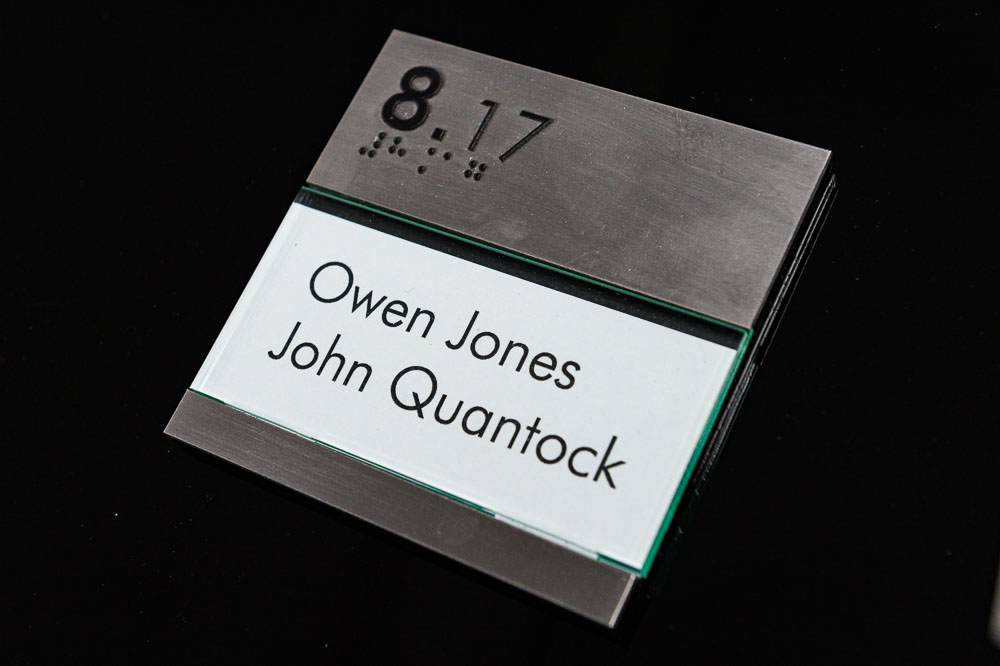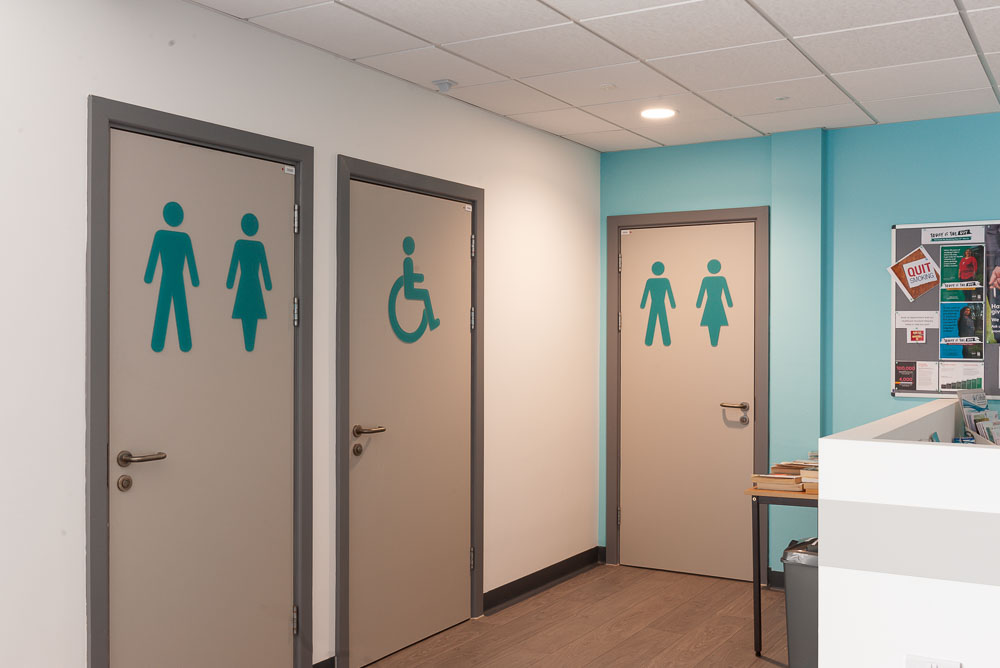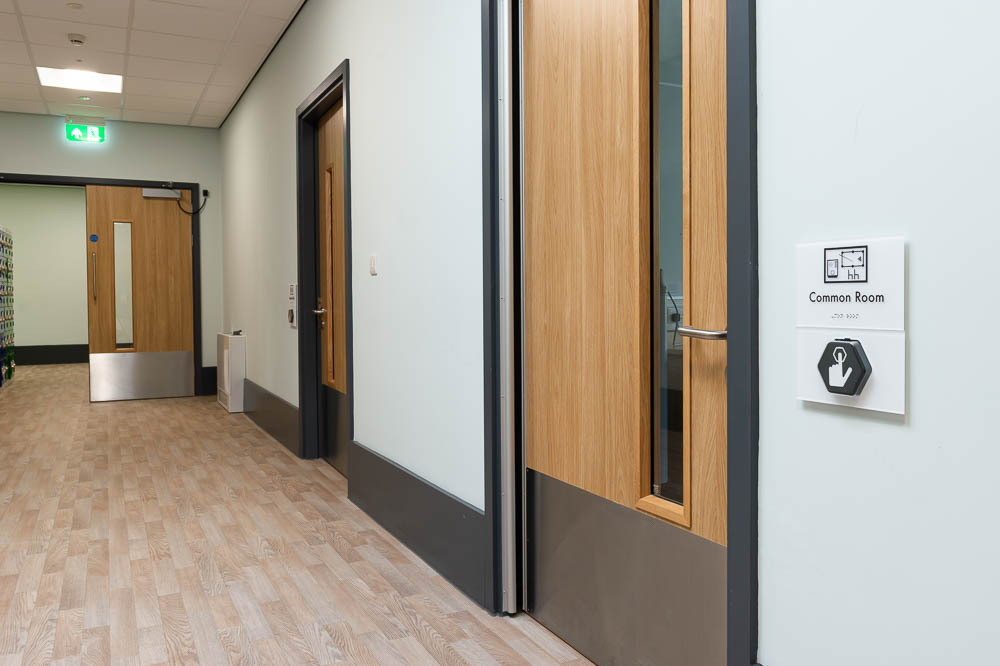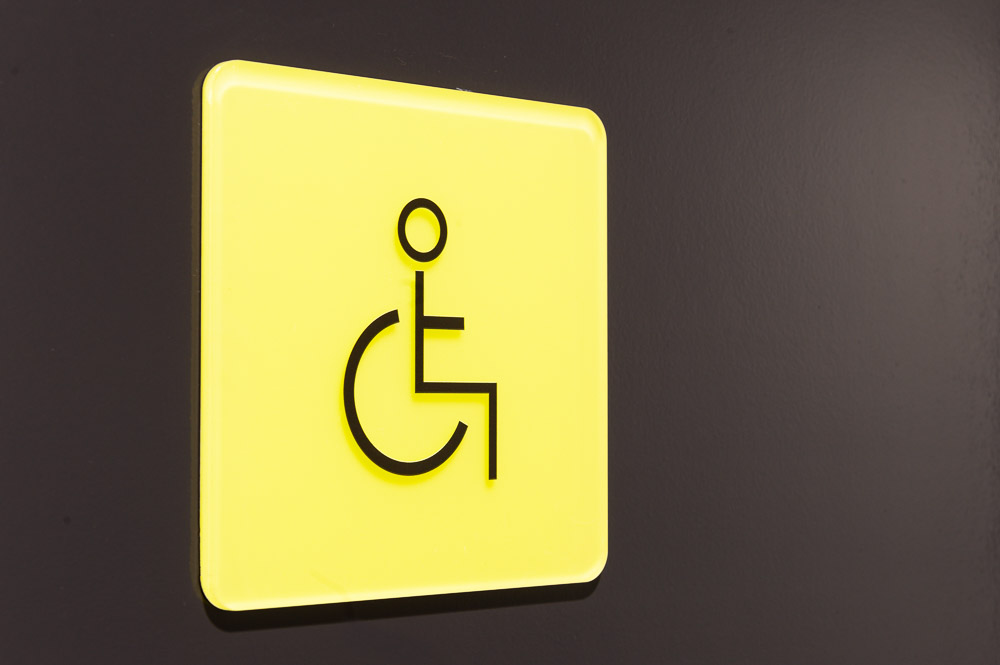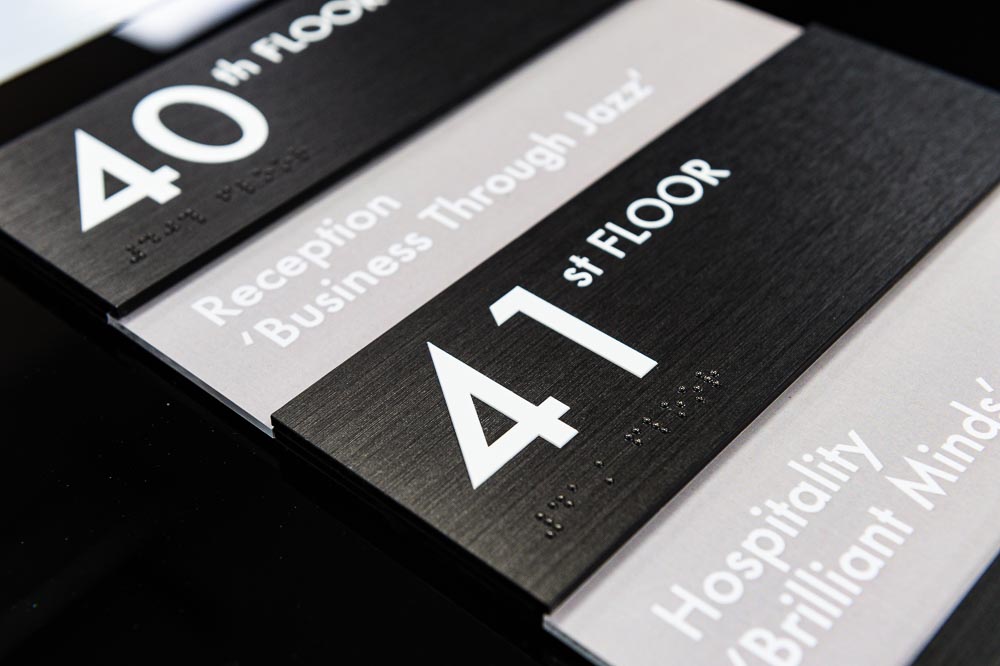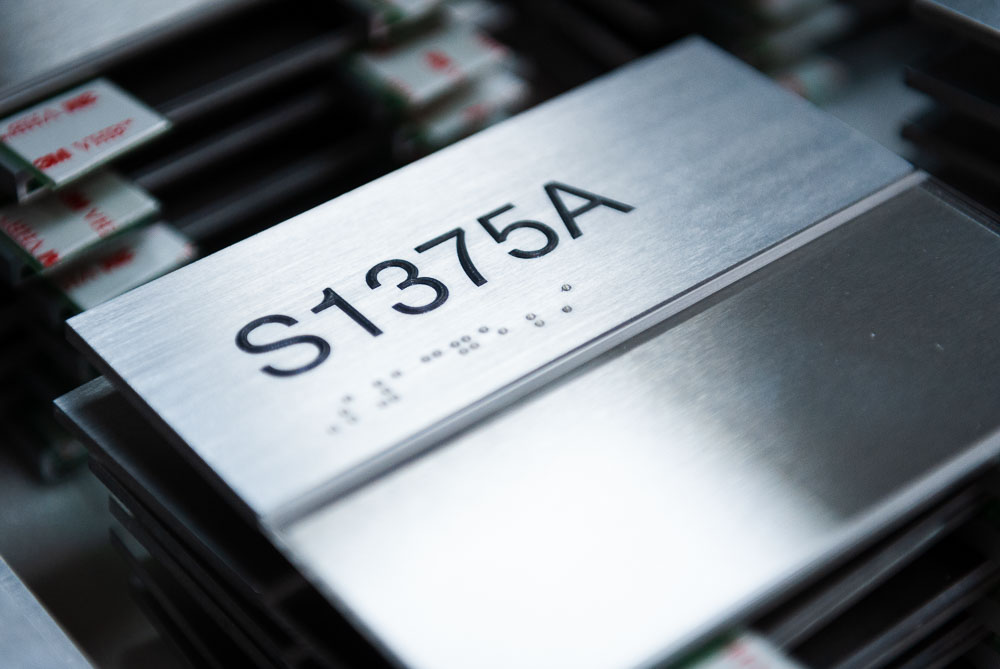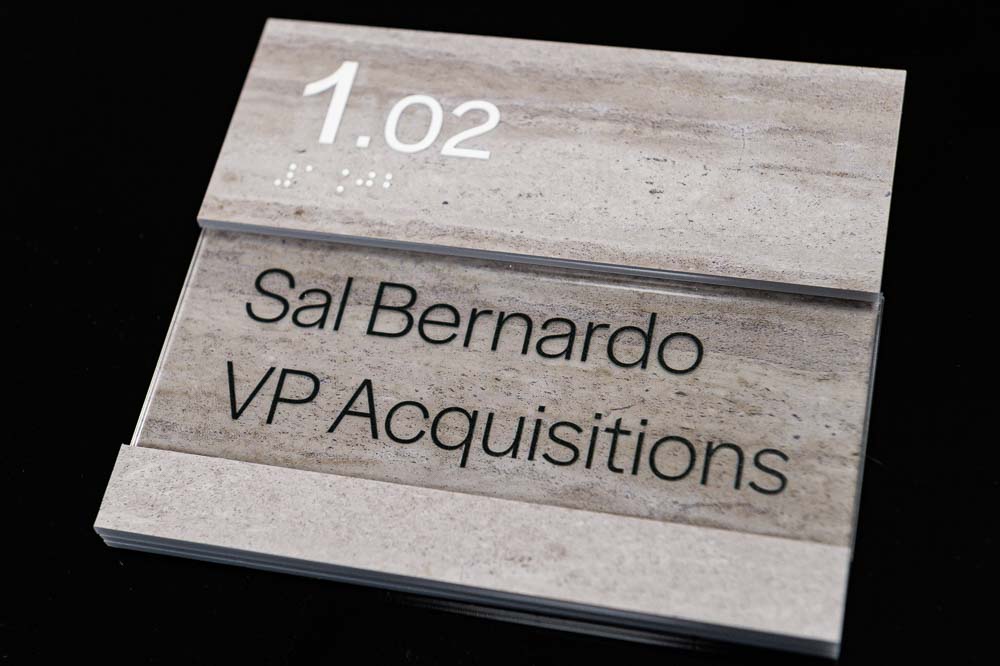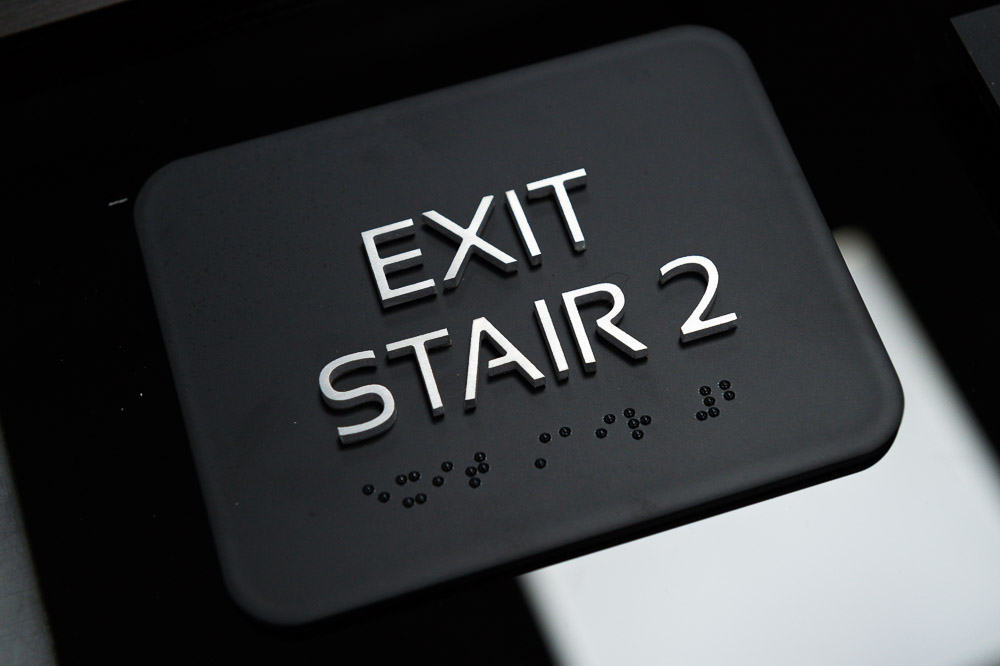Inclusive Signs
We believe that wayfinding signs should be accessible to all. That’s why we’ve developed a number of sign technologies to aid inclusivity in buildings.
Inclusive Signage is Vital for Making Everyone Feel Welcome
Being inclusive is more than just ticking a box.
Why are inclusive signs important in the modern built environment?
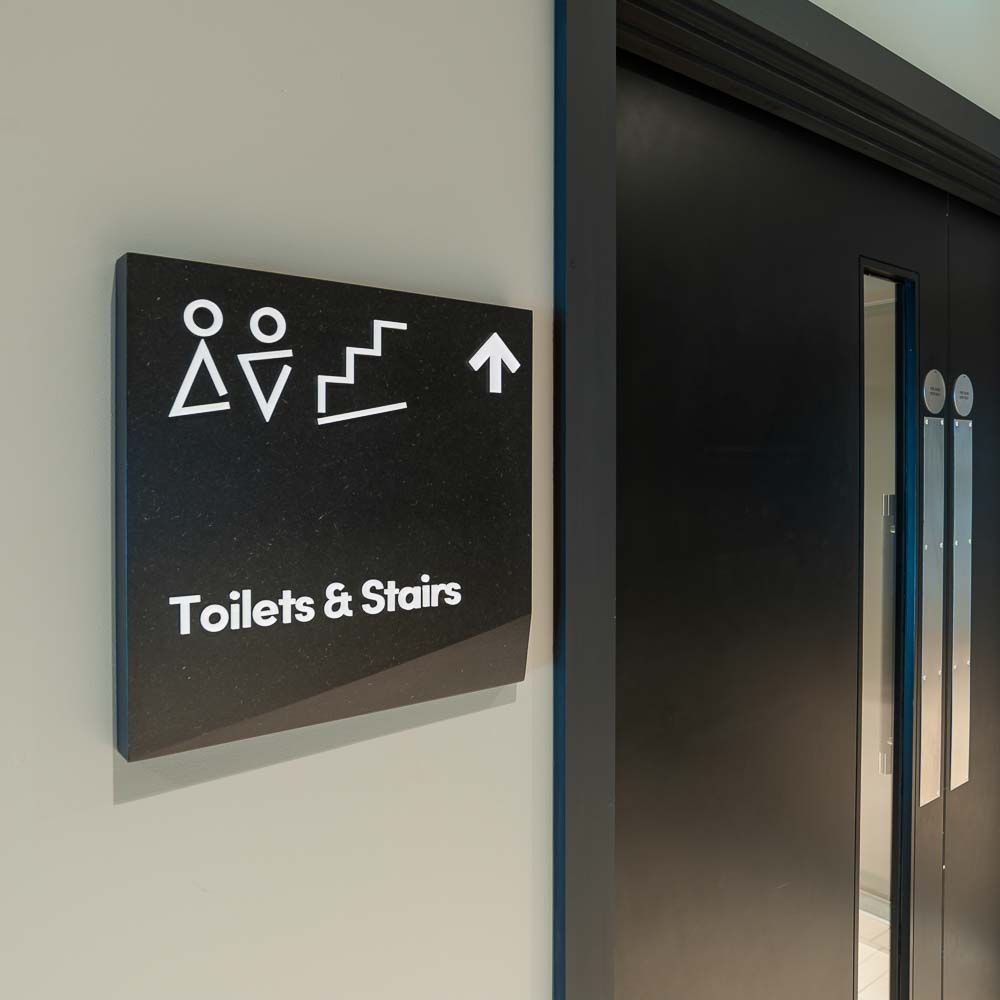
Incorporating inclusive signs is hugely important because it creates a safe and accessible environment. It allows anyone navigating the built environment, to do so as independently as they wish.
Integrating signs that cater to a diverse range of cognitive or mobility differences, also makes a physical statement about your brand’s commitment to accessibility and inclusivity.
What is the difference between inclusive and standard signage?
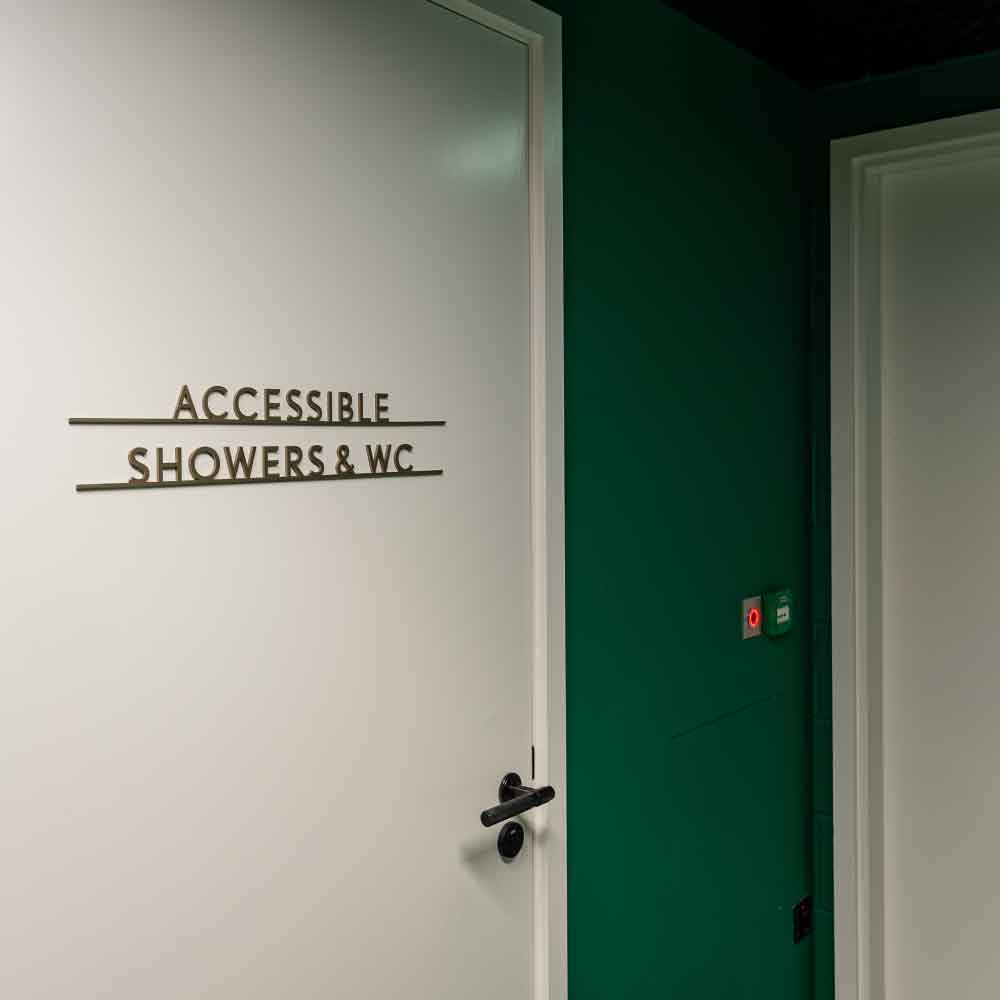
There are several differences between inclusive and standard signage, as our inclusive signs are made for specific needs and impairments. As well as adding a physical feature like braille or a Talky button, more emphasis is placed on readability.
Larger fonts, colour contrast, pastel colours, and easy-to-read fonts are some of the ways that inclusive signs are made differently to standard signs.
What common mistakes should be avoided with inclusive signage?
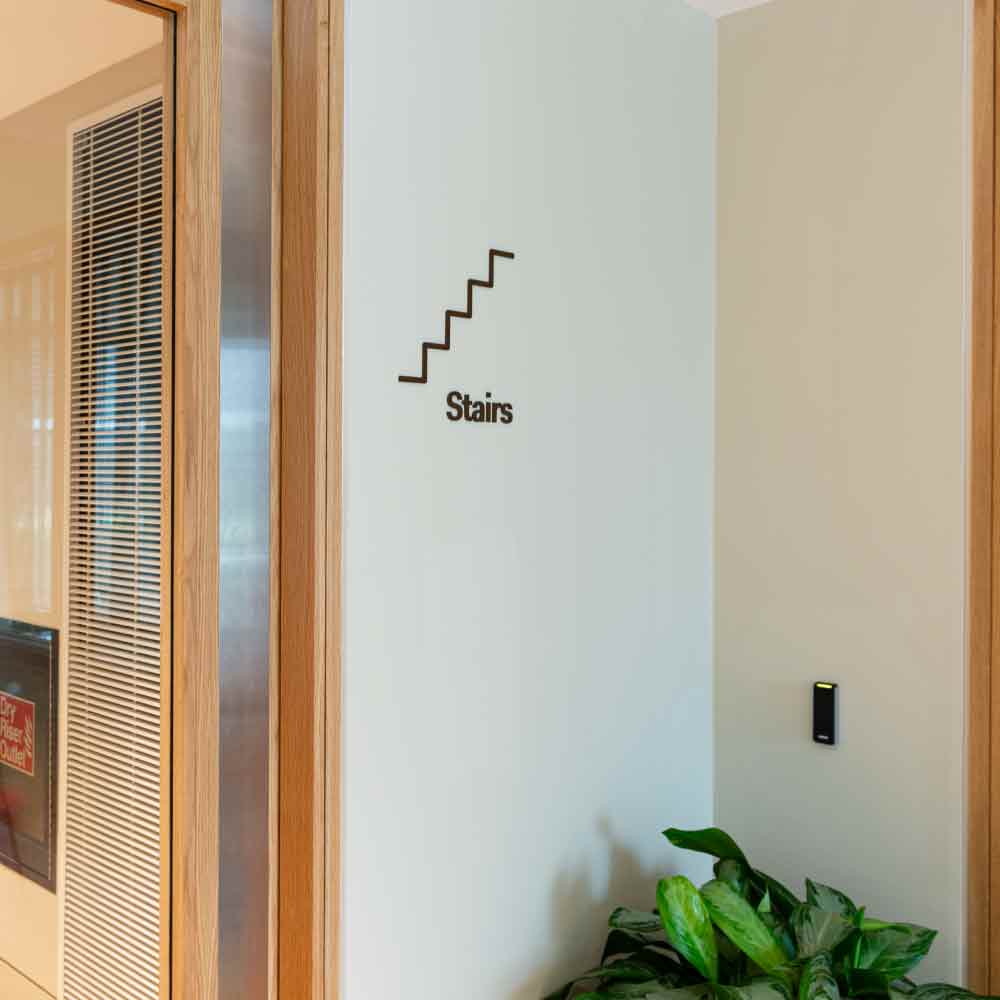
When planning inclusive signage there are key factors to consider and mistakes to avoid. Engaging with professionals such as experts in dementia communication, visual impairments and braille is essential for ensuring accuracy.
It’s also important to ensure the locations of inclusive signage have been well planned out. This is to avoid mistakes like putting braille signs behind doors that open out, or Talky signs out of reach for wheelchair users and people of short stature.
Can you make inclusive signage creative and interesting?
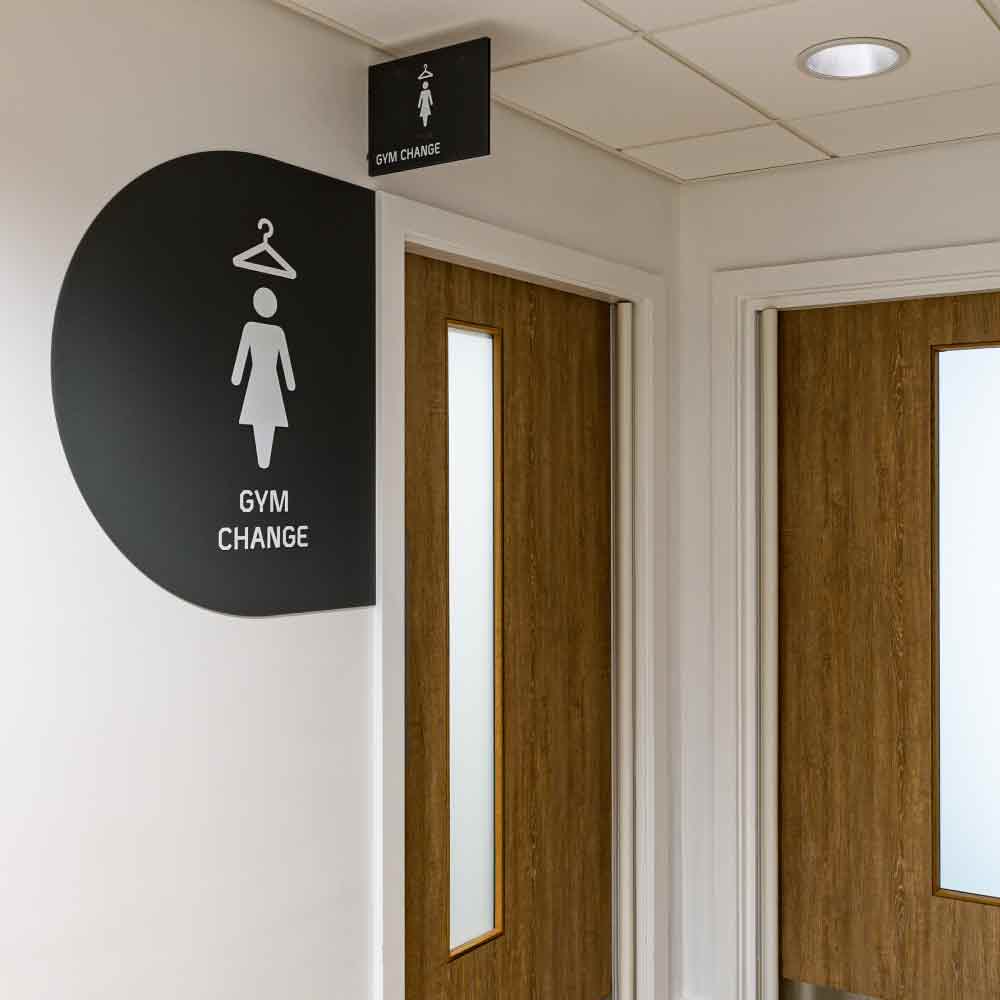
Absolutely, inclusive signage can be made creative and interesting. Our talented creatives and architects combine functions and features seamlessly into signage design so the aesthetics are just as appealing as they would be for signage designed without inclusivity in mind.
Integrating signage using a client’s brand and fitting it into the overall design of the built environment or space is the very nature of architectural signage.
Inclusive sign systems for all
We are proud to have developed a number of sign technologies and printing methods to provide schools, universities and office spaces with a range of inclusive sign options to aid wayfinding for their visitors.
We have worked with all methods of creating inclusive signs for users with special needs and have developed a new 3D printing method for Braille and Tactile designs which conforms to the UK Equalities Act, Part M building regulations and ADA standards for the USA.
In addition, we have experience of signing for people with learning disabilities and dementia.
What Are the Main Benefits of Inclusive Signage?
Inclusive signage helps people in more ways than one.
Creates a calmer journey for users

For disabled people, inclusive signage can make an experience finding their way around much less stressful.
People who find unfamiliar places scary or have language barriers will also benefit from the way inclusive signage makes places less intimidating to travel through.
Promotes diversity and inclusion
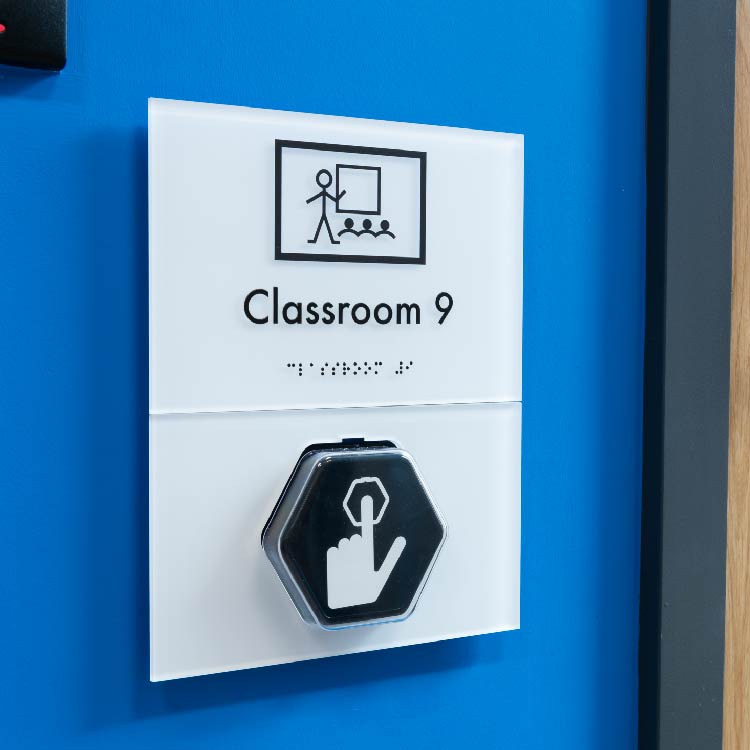
Inclusive signage promotes diversity and inclusion by recognising and accommodating the diverse needs of all users, regardless of their backgrounds and abilities.
It sends a message of respect and consideration for everyone, fostering a sense of belonging and acceptance within any space or environment.
Improves user experience
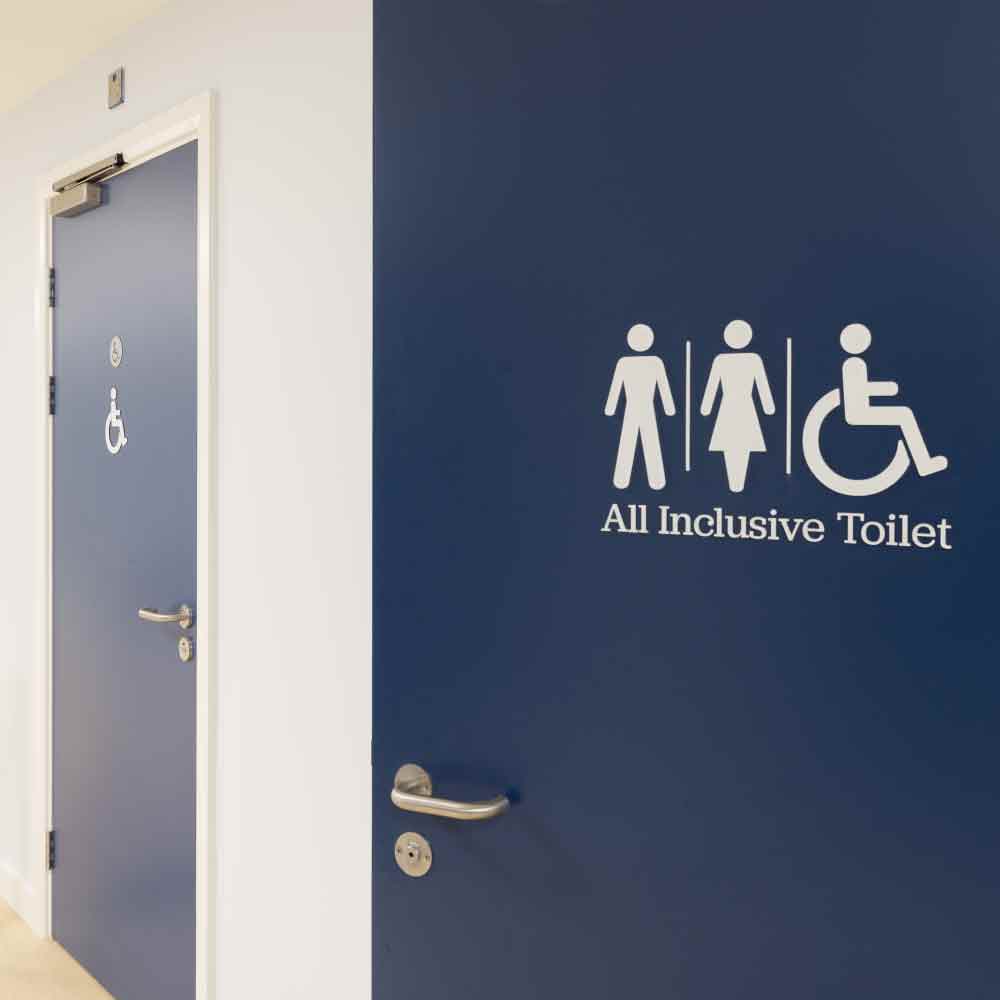
A more welcoming and accessible environment improves the experience of those who make use of inclusive signage.
Signage that is designed with diverse needs in mind, helps people feel more confident and comfortable in their ability to interact with their surroundings.
Enhances communication
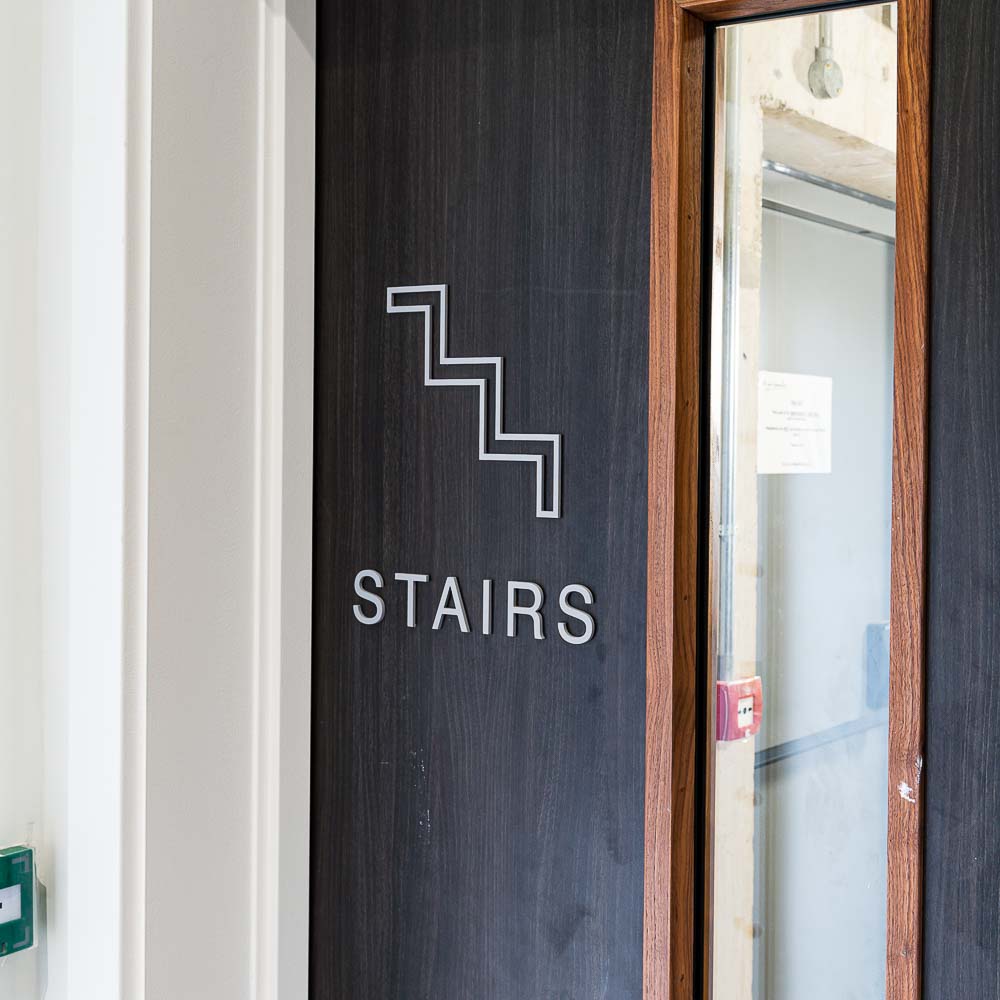
Incorporating clear, easy-to-understand, and specific inclusive signage encourages and facilitates communication between the different parties in any environment.
This is particularly important in public spaces, workplaces, and facilities where clear communication is essential for good customer service, safety, navigation, and information.
Frequently Asked Questions
Inclusive signage is hugely important for accessibility and we believe that every space and environment should be accessible to everyone. Accessibility forms part of many workplace and public policies and wayfinding is often included in them.
Creating signage that is inclusive means that people with accessibility needs will be able to navigate just as well as people without. Inclusivity isn’t just about accessibility though, inclusive signage also affects the LBGTQ+ community and can make people feel more welcome.
There are several types of inclusive signage including braille, tactile and talky. There are also different icons and images that can be included to make signage inclusive. Inclusive signage can be interior or exterior and made from a range of materials such as stainless steel or wood.
Our inclusive signage types include braille, tactile and talky signs. We can also design graphics and icons that are inclusive, including non-gender specific toilet and breastfeeding icons.
It depends on the type of material and size of the signs. Small signs can be affixed to a wall with adhesive tape but larger signs may need permanent secure fixtures.
Use the contact form at the bottom of this page to make an enquiry. One of our friendly team will reach out to discuss your requirements.
We have a dedicated sales team with a huge amount of experience in the signage industry. Please use the contact form at the bottom of this page to make an enquiry or visit our Contact Us page.
We work with main contractors and end users, including some of the biggest contractors in the UK. Take a look at our Case Studies for more information on who we have worked with.
We have provided inclusive signage for contractors and end users around the UK including hospitals, universities and schools.

